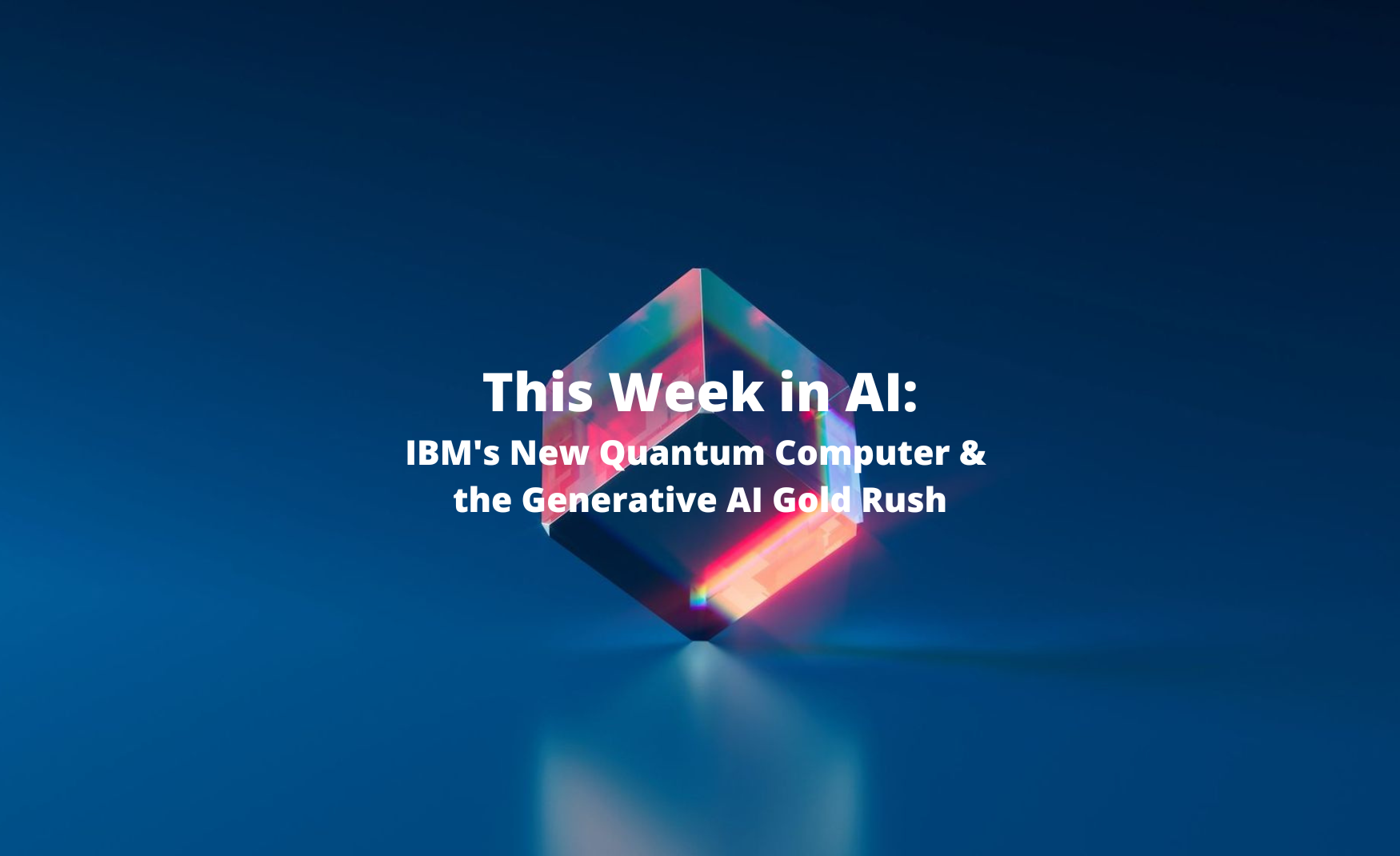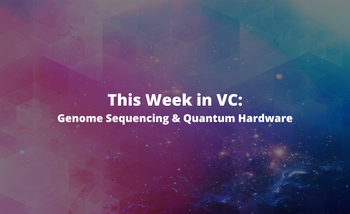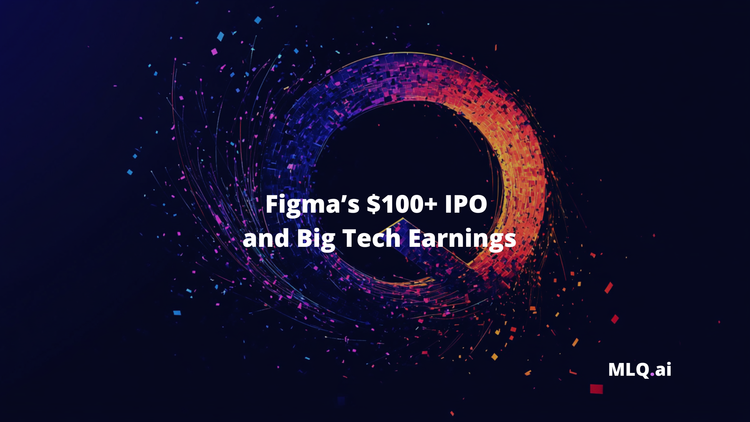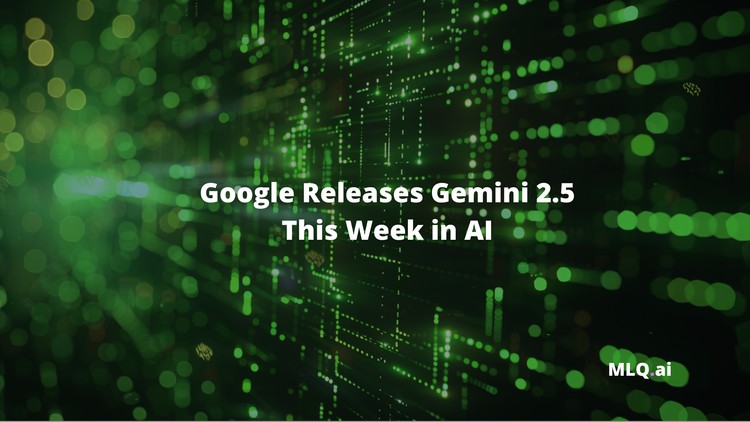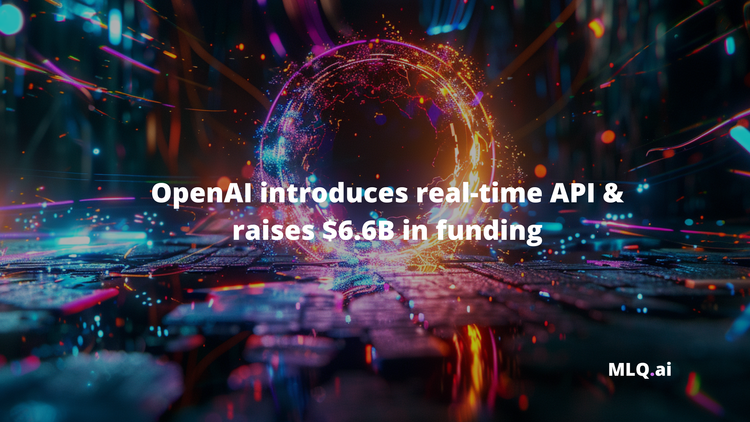Welcome to our This Week in AI roundup - this week we have stories about IBM unveiling their new 433 qubit quantum computer, 9 trends to watch that are shaping the AI industry, and the generative AI gold rush.
- IBM Unveils New 433 Qubit Quantum Computer
- Nine Trends to Watch in AI
- The Generative AI Gold Rush
1. IBM Unveils New 433 Qubit Quantum Computer
- IBM today announced new advancements in quantum hardware and software, outlining its vision for quantum-centric supercomputing.
- The company unveiled the IBM Osprey processor, with 433 qubits - more than tripling the 127 qubits on the previous IBM Eagle processor.
- New software addresses error correction and mitigation, to simplify noise reduction in quantum computers
- IBM updated details of the new IBM Quantum System Two - a system designed to be modular and flexible, combining multiple processors into a single system with communication links.
- With increasing power of quantum computers, IBM also announced new Quantum Safe technology to protect systems against potential future decryption by a quantum computer.
Read the full story
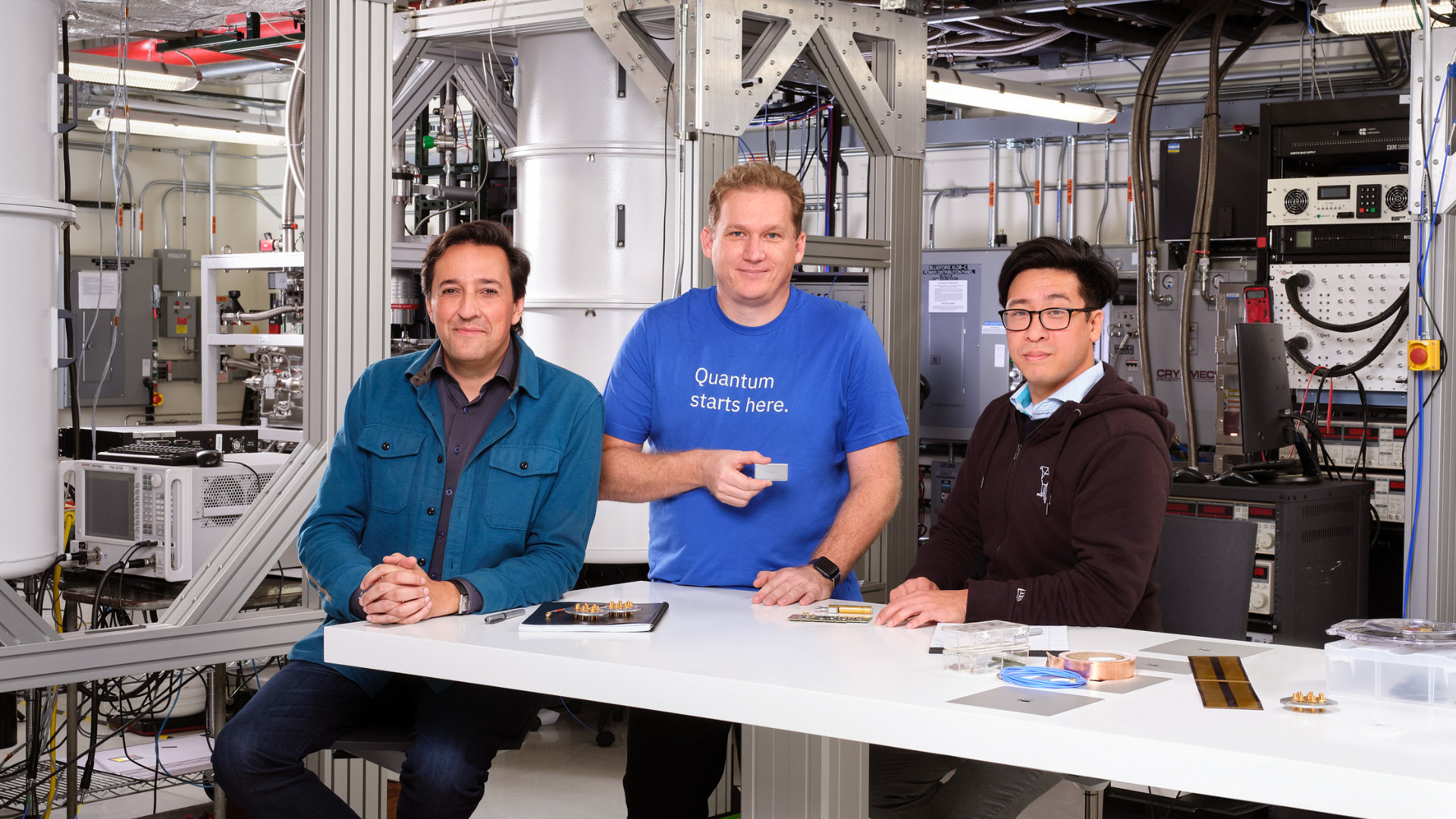
Stay up to date with AI
2. Trends to Watch in AI
What to watch in AI - another amazing article from The Generalist, here are a few of our favorite trends highlighted in the post:
- The elevation of human work
- Generative AI and life sciences
- Collaborative interfaces
- AI video creation
- Automated code generation and app development
The elevation of human work
- Large language models are powering assistive tools that radically increase productivity, impact, and value across a wide range of professions.
- For artists, we've got AI image-generation tools like OpenAI’s DALL-E, Midjourney, and many others. For programmers, we've got Microsoft's GitHub Copilot.
- What Copilot does for developers and DALL-E does for visual creatives of all kinds is reduce or eliminate rote, time-consuming aspects of their jobs.
- A Copilot for attorneys could help them draft contracts, motions, briefs, and other legal documents based on natural language queries. A Copilot for architects could help them design buildings based on specifications and constraints.
- Imagine a world where millions of professionals across thousands of industries use domain-specific versions of Copilot to achieve new levels of productivity accuracy and creativity.
Generative AI and life sciences
- These text-to-image/video models offer viral consumer-grade products that capture our imagination, but the most impactful applications of these models are unlikely to be their first-order effect.
- The place to build is at the intersection of AI and science, specifically in the life sciences. Today’s scientific method is firmly rooted in data-driven experimentation and AI model architectures that are capable of modeling human language, natural images, or social network graphs can be directly transferred into modeling proteins’ language, cells’ images, or chemical molecule graphs.
- This uncanny generalization ability is now unlocking breakthroughs in protein structure prediction and drug molecule design.
- AI is driving a new generation of technology-driven biotech companies (“TechBio”) attacking the trillion-dollar pharmaceutical industry to deliver improved medicines faster and at a lower cost.
Collaborative interfaces
- Large language models (LLMs) are powerful tools that are still being tested for instruction purposes.
- Prompt engineering has become a popular activity among nerds to try and get the most out of these models.
- However, natural language is not perfect and there are no obvious abstractions or maps to navigate a model's "latent space."
- Startups that have begun to figure out UX simplifications for narrow use cases have reaped returns.
- Everyone with internet access will very soon be indirectly using large language models in daily tasks, which will disrupt search unrecognizable.
- LLM-based tools designed for more mastery and deeper interaction will be created as people begin to want generated images to be manipulable in structure and trustworthy output without hallucinations from their AI assistants.
AI video creation
- Generative AI is a hot topic in the tech world right now, and for good reason - it has a lot of potential.
- Synthesia is a great example of a company that is using generative AI to create professional videos quickly and easily.
- There are many enterprise use cases for Synthesia, with customers finding it particularly useful for onboarding and training purposes.
- The company has built its own proprietary AI technology, which gives it an edge over competitors who are relying on GPT-3.
Automated code generation and app development
- GitHub's release of their "AI pair programmer" Copilot product in late 2021 shocked many, as the deep learning models used by the product were able to autocomplete code for skilled software developers.
- Copilot is built using OpenAI's large language model (LLM) of Codex, which was trained using tens of millions of public GitHub code repositories.
- For context, OpenAI is a San Francisco-based artificial intelligence research company founded in 2015; it made itself for-profit in 2019 and raised $1 billion from Microsoft (who acquired Github in 2018) to fund its research. In return, Microsoft gained exclusive access to some of OpenAI’s LLMs, including Codex.
- Newly-created startups and well-established companies have started addressing multiple parts of the product-building experience with automation, including code reviews, quality improvements, documentation generation, and even frontend and website generation.
Read the full story

3. The Generative AI Gold Rush
- Social media has been overrun by images generated by AI, thanks to advances from companies like Hugging Face.
- A new generation of AI startups have raised hundreds of millions of dollars in funding.
- Generative AI enthusiasts predict the technology will take root in all kinds of industries, including music, game development, writing assistants, customer service bots, coding aids, and video editing tech.
- Guo believes generative AI is a leap in the potential of AI technology similar to one beginning in 2012 that reshaped the whole tech industry and the products it offers.
- The race is now on to find applications for generative AI that will make a mark on the world; some early successes include Microsoft’s Copilot and Jasper.
Read the full story

That's it for this edition of This Week in AI, if you were forwarded this newsletter and would like to receive it you can sign up here.

